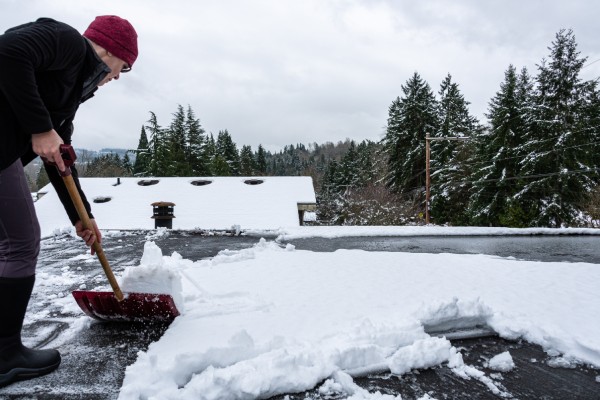Your home’s roof is a critical component that protects against all elements year-round. That is why it is of the utmost importance to maintain your roof throughout the year. With the changes in temperatures, rainfall patterns, snow, and high winds that vary during the seasons, each season has challenges, and addressing them with advice from a roofing expert is essential. Regular seasonal roof maintenance can save you money and time on damages and costly repairs in the future. This blog will address the tailored practices for each season to ensure your roof maintenance is on par with your requirements of its function.
Consequences of Neglecting Roof Maintenance
Putting off roof maintenance and the necessary repairs may cost you more money, time, and effort in the long run, as the home will suffer the effects of the neglect. Small problems will become bigger, and not addressing the signs of roof damage when it starts could result in bigger, more costly problems. Water damage, leaks, mold growth, and nesting of pests in your roof are signs that the roof needs maintenance before it results in rotting, damage to insulation and dry walls, structural damage, and eventually it goes right down to your personal belongings in the house – no longer protected by the roof. The roof’s longevity depends on the care and upkeep it gets as the natural elements your roof protects your house from have an impact on the roof. The natural wearing-down and aging of the roof can be extended by addressing minor issues promptly and regular inspections. Regular roof maintenance is essential for preserving the structural integrity of your roof and extending its lifespan – saving money in the long run.

Seasonal Challenges
-
Winter
Before harsh winter weather starts, a thorough roof inspection is required. Inspect the roof and siding for damage and weak spots. If you notice serious damage, you must have it repaired by a professional before winter starts in its fury. Check the flashings and seals for being loose, broken, or warped. Clearing debris, cleaning gutters, and checking for leaks can prevent ice dams and water. Big branches or hazardous trees close to the roof must be trimmed. Pests may try to get into your home for heat, resulting in holes in the roof and other problems. Getting rid of nests and pests before infestation starts is essential. Check the ventilation in the house and adjust the temperature control to be consistent. Heavy snow, sleet, and ice accumulation can cause the layers of the roof to erode, and harsh winds can cause damage and water infiltration that causes extensive damage.
Roofs require more attention during the winter season than at any time of the year. Here are some maintenance tasks you can do on your own:
- Remove snow and ice build-up from your roof.
- Check for signs of ice dams along the edges of your roof and take steps to prevent its formation.
- Monitor the attic for signs of moisture build-up, such as condensation and mold growth.
- Keep branches trimmed to prevent them from breaking and damaging the roof.
-
Spring Cleaning and Post-Winter Inspection
Spring is the season of renewal, and your roof needs an inspection for renewal. Clean the gutters and accumulated remnants from Winter to prevent water build-up and ensure your roof remains water-resistant. Check flashing, shingles, and seals again for distortion and replace and repair if necessary. The following maintenance tasks need to be done:
- Inspect the roof for signs of damage, such as missing shingles, cracks, or leaks.
- Clean gutters and downspouts to ensure proper drainage.
- Trim overhanging branches, which could damage the roof. Professional
- Schedule a roof inspection with Frontline Home Solutions to identify potential issues and address them promptly.
-
Summer: Season of Heat and Warmth
Prepare your home to enjoy Summer’s hot weather by inspecting the roof. Clean the ventilation systems to ensure optimal airflow and promote energy efficiency. Examine the seals of skylights and chimneys, which are potential weak points for leaking. The hot summer sun can impact the shingles, so they must be checked for warping and curling to maintain the roof’s integrity. A short list of DIY tasks for Spring:
- Check for signs of wear and tear, such as curling or blistering shingles, and replace damaged shingles as needed.
- Clean debris, such as leaves and branches, off your roof to prevent moisture buildup and mold growth.
- Inspect flashing around vents, chimneys, and skylights for signs of damage or deterioration and repair as necessary.
- Consider applying a reflective coating to your roof to reduce heat absorption and lower your energy bills.
-
The Mellow Time of Fall
Falling leaves must be cleared, and gutters and proper drainage must be ensured before Winter. Check the attic insulation again and reinforce it if necessary. Prepare for Winter storms by checking any loose tiles or shingles and trim branches close to the roof.

Your roof needs consistent and comprehensive care throughout the year, addressing specific needs for each season. A well-maintained roof is a resilient roof. Collaborating with roofing professionals for seasonal assessments can provide peace of mind. Stay proactive, address issues promptly, and maximize your roof’s longevity and performance to safeguard the inhabitants and possessions in your house.



